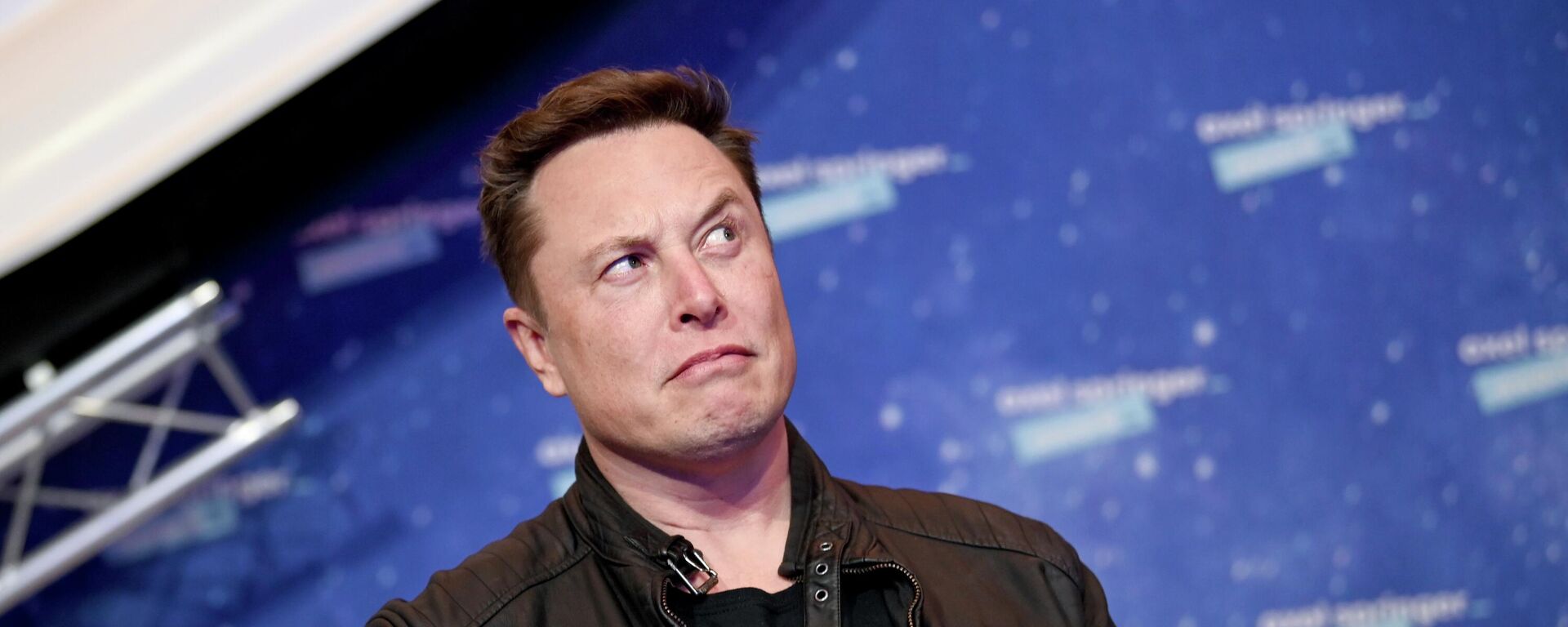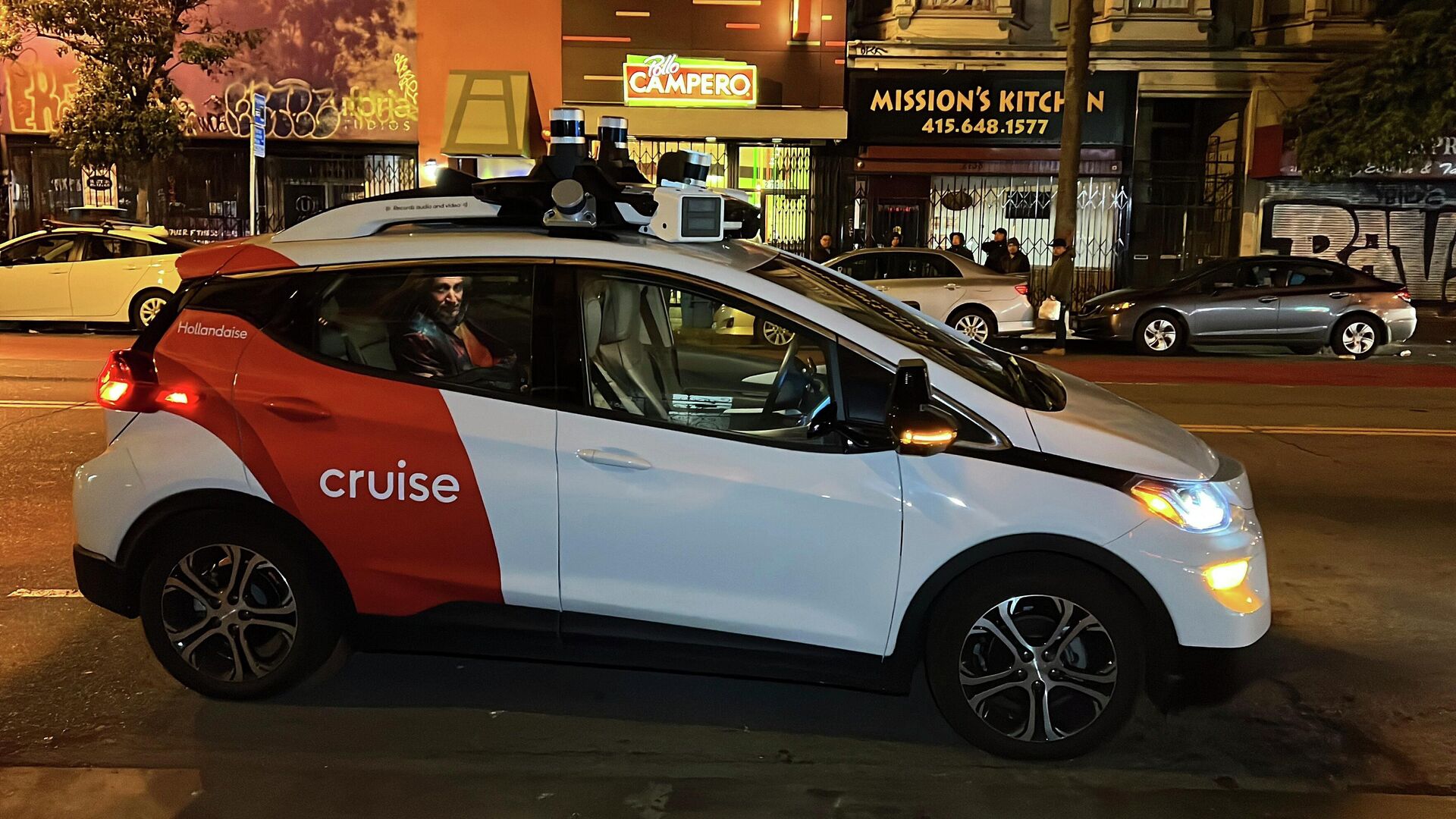https://sputnikglobe.com/20230818/photo-driverless-car-in-san-francisco-gets-stuck-in-wet-concrete-1112694658.html
Photo: Driverless Car in San Francisco Gets Stuck in Wet Concrete
Photo: Driverless Car in San Francisco Gets Stuck in Wet Concrete
Sputnik International
A driverless car, equipped with its array of high-tech sensors, managed to navigate itself into a sticky situation – literally – by getting stuck in freshly poured wet concrete.
2023-08-18T03:21+0000
2023-08-18T03:21+0000
2025-04-07T11:07+0000
beyond politics
san francisco
driverless cars
driverless car
driverless vehicle
car
car accident
viral news
https://cdn1.img.sputnikglobe.com/img/07e7/08/12/1112694209_0:0:3520:1980_1920x0_80_0_0_2b9c4f4e857c5baa81f9c01f5d211317.jpg
A driverless car, equipped with its array of high-tech sensors, managed to navigate itself into a sticky situation – literally – by getting stuck in freshly poured wet concrete.Although driverless cars have largely avoided causing serious accidents or injuries in the city, the recent escapade highlights the occasional missteps in their navigation. The self-driving vehicles are touted for their potential to reduce congestion, curb pollution, eliminate human-error-related accidents, and enhance mobility for people with disabilities.The vehicle involved in the concrete debacle was identified as belonging to Cruise, a subsidiary of General Motors. City officials in San Francisco, California, reported that the construction area had been marked off with cones, accompanied by flag-wielding workers stationed at each end of the block.However, one of these autonomous vehicles found itself mired in wet concrete as it ventured onto a city paving project. The sight of the vehicle, slightly tilted forward with its wheels ensnared in the setting concrete, was captured by Paul Harvey, a retired contractor residing in the city's Western Addition neighborhood. Harvey remarked that the incident humorously underlined the eerie and unconventional aspects of autonomous driving.Rachel Gordon, spokesperson for the San Francisco Department of Public Works, reassured the public that the cost of repaving the affected portion of the road would be borne by Cruise. Luckily, no injuries were reported from the incident.While proponents of driverless technology highlight their potential safety benefits, San Francisco has witnessed instances of these vehicles straying off course, including driving onto fire hoses and halting unexpectedly in the middle of the road. Authorities have expressed their concerns and willingness to collaborate with the autonomous vehicle companies, emphasizing the need for further refinement.In response to the incident, Drew Pusateri, a spokesperson for Cruise, acknowledged that one of their autonomous vehicles had indeed "entered a construction area and stopped in wet concrete." He explained the vehicle had been retrieved, although details about whether it was extracted from the concrete or towed remain unclear.Despite setbacks, the companies behind driverless cars emphasize their overall safety record compared to traditional human-operated vehicles. Officials contend the autonomous technology has been involved in fewer collisions, especially in severe incidents that pose a risk of injury.Experts including Paul Leonardi, a technology management professor at the University of California, Santa Barbara, argue such mishaps are part and parcel of developing a new technology like autonomous driving. He suggests such challenges provide opportunities for machines to learn and adapt to a diverse range of real-world scenarios, ultimately contributing to their improvement. "It needs to experience a diverse set of use cases so it can learn, and driving into wet concrete is one of those use cases. We might frame this as a positive that all it did was get stuck in the concrete," he said.
https://sputnikglobe.com/20230112/surveillance-footage-shows-how-self-driving-tesla-caused-devastating-8-car-pile-up-1106241255.html
san francisco
Sputnik International
feedback@sputniknews.com
+74956456601
MIA „Rossiya Segodnya“
2023
News
en_EN
Sputnik International
feedback@sputniknews.com
+74956456601
MIA „Rossiya Segodnya“
Sputnik International
feedback@sputniknews.com
+74956456601
MIA „Rossiya Segodnya“
driverless car accident in san francisco, cruise driverless auto incident, driverless car got into wet concrete, are driverless cars safe to use, san francisco wet concrete incident
driverless car accident in san francisco, cruise driverless auto incident, driverless car got into wet concrete, are driverless cars safe to use, san francisco wet concrete incident
Photo: Driverless Car in San Francisco Gets Stuck in Wet Concrete
03:21 GMT 18.08.2023 (Updated: 11:07 GMT 07.04.2025) In the ever-evolving landscape of autonomous vehicles, a quirky incident unfolded on the streets of San Francisco that raised eyebrows and questions about the reliability of driverless technology.
A driverless car, equipped with its array of high-tech sensors, managed to navigate itself into a sticky situation – literally – by getting stuck in freshly poured wet concrete.
Although driverless cars have largely avoided causing serious accidents or injuries in the city, the recent escapade highlights the occasional missteps in their navigation. The self-driving vehicles are touted for their potential to reduce congestion, curb pollution, eliminate human-error-related accidents, and enhance mobility for people with disabilities.
The vehicle involved in the concrete debacle was identified as belonging to Cruise, a subsidiary of General Motors. City officials in San Francisco, California, reported that the construction area had been marked off with cones, accompanied by flag-wielding workers stationed at each end of the block.
However, one of these autonomous vehicles found itself mired in wet concrete as it ventured onto a city paving project. The sight of the vehicle, slightly tilted forward with its wheels ensnared in the setting concrete, was captured by Paul Harvey, a retired contractor residing in the city's Western Addition neighborhood. Harvey remarked that the incident humorously underlined the eerie and unconventional aspects of autonomous driving.
"I thought it was funny. I was kind of pleased because it illustrated how creepy and weird the whole thing is to me," Harvey said in an interview to a US media outlet.
The timing of the mishap is particularly noteworthy. Just days earlier, California regulators gave the green light to the expansion of driverless taxi services in San Francisco, allowing companies akin to Cruise to offer paid rides throughout the day across the city.
Rachel Gordon, spokesperson for the San Francisco Department of Public Works, reassured the public that the cost of repaving the affected portion of the road would be borne by Cruise. Luckily, no injuries were reported from the incident.
While proponents of driverless technology highlight their potential safety benefits, San Francisco has witnessed instances of these vehicles straying off course, including driving onto fire hoses and halting unexpectedly in the middle of the road. Authorities have expressed their concerns and willingness to collaborate with the autonomous vehicle companies, emphasizing the need for further refinement.

12 January 2023, 04:10 GMT
In response to the incident, Drew Pusateri, a spokesperson for Cruise, acknowledged that one of their autonomous vehicles had indeed "entered a construction area and stopped in wet concrete." He explained the vehicle had been retrieved, although details about whether it was extracted from the concrete or towed remain unclear.
Despite setbacks, the companies behind driverless cars emphasize their overall safety record compared to traditional human-operated vehicles. Officials contend the autonomous technology has been involved in fewer collisions, especially in severe incidents that pose a risk of injury.
Experts including Paul Leonardi, a technology management professor at the University of California, Santa Barbara, argue such mishaps are part and parcel of developing a new technology like autonomous driving.
He suggests such challenges provide opportunities for machines to learn and adapt to a diverse range of real-world scenarios, ultimately contributing to their improvement. "It needs to experience a diverse set of use cases so it can learn, and driving into wet concrete is one of those use cases. We might frame this as a positive that all it did was get stuck in the concrete," he said.



